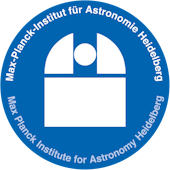
Max Planck Institute for Astronomy

How do stars and planets form? What can we learn about planets orbiting stars other than the Sun? Do any other planets host life? How do galaxies form, and how have they changed in the course of cosmic history? Those are the central questions guiding the work of the scientists and engineers at the Max Planck Institute for Astronomy (MPIA) in Heidelberg.
The institute was founded in 1967, and it is one of roughly 80 institutes of the Max Planck Society, Germany’s largest organizations for basic research. MPIA has a staff of around 290, three quarters of which are working in sci-tech. At any given time, the institute features numerous junior scientists and guest scientists both from Germany and abroad.
Links
Displaying 1 article

Los datos decían que el centro de la Vía Láctea es una fábrica de estrellas jóvenes, pero estaban perdidas. Con una auténtica labor de detectives, hemos logrado localizarlas.
